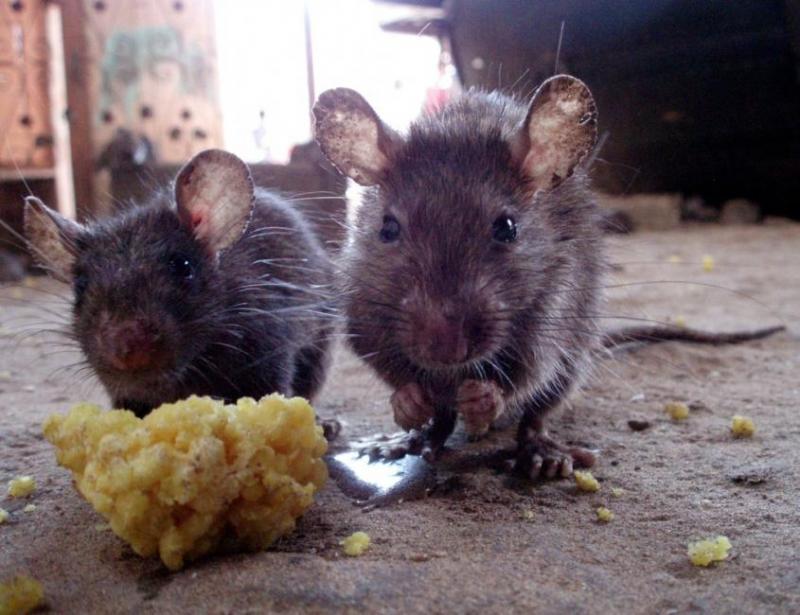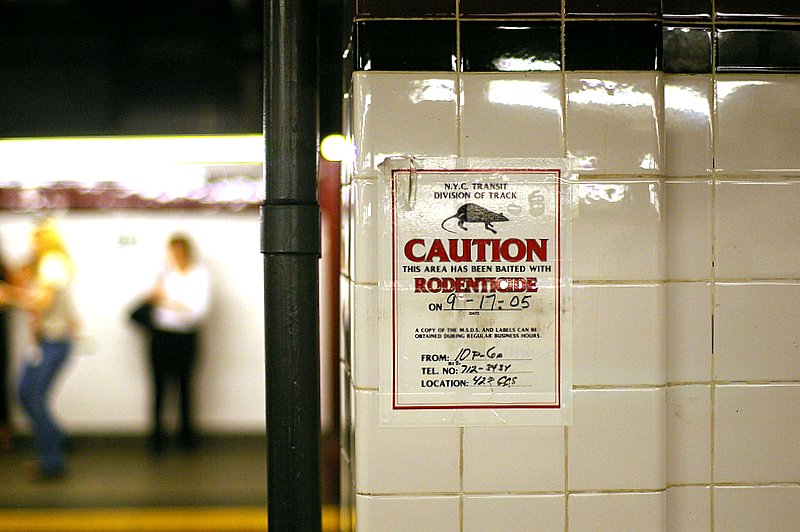
Rats are considered one of the most unwanted species inhabiting anthropogenic environments.
Rats are considered one of the most unwanted species inhabiting anthropogenic environments.
This image was taken by Matthieu Aubry. Click here to view Flickr source.
 This work is licensed under a Creative Commons Attribution-NonCommercial-ShareAlike 2.0 Generic License.
This work is licensed under a Creative Commons Attribution-NonCommercial-ShareAlike 2.0 Generic License.
Is it possible to solve the urban rat problem once and for all? Most scientists agree that eradicating rat populations completely is an impossible task, but at the same time emphasize that we already have a solution that can significantly reduce them. It is not a new, “wonder” rodenticide that they refer to. In fact, effective strategies for rat control, based on ecology, were invented in Baltimore in the 1940s. So why do we still struggle with this problem?
The modern chapter of rat control started in Baltimore in the 1940s. At the beginning it had nothing to do with ecology. During the war, there was a prevalent belief that chemical solutions could deal with a vast number of our problems. It was not until two decades later that Rachel Carson wrote her book Silent Spring, a groundbreaking book which showed the devastating effects of pesticides. That is why when ANTU rat poison, a chemical substitute for red squill, was created by Curt Richter in 1942, it was branded as a “wonder.” Extremely cruel—it filled the rats’ lungs with water and caused drowning within 16–30 hours—it killed these animals more effectively than any method used before. For a moment, Baltimoreans thought that the rat problem they had struggled with for so many years was finally solved.
The story was not over, though. It soon became clear that ANTU is not only harmful to rats. Poisonings of household pets and children were reported and, as Richter refused to reveal the formula, doctors could not find an antidote. Occasional poisonings were not the only problem that ANTU posed. Another issue was that it turned out to be a surprisingly short-term solution. Although it reduced the rat population significantly right after its application, a sharp population increase was observed over the following months.
At the same time David E. Davis, John Emlen, and John Calhoun, scientists at the Johns Hopkins School of Hygiene and Public Health, developed the Rodent Ecology Project. They conducted research on the ecology and sociology of rats in order to provide effective rat-control solutions other than chemical extermination. In his research, Davis proved that a constant supply of food and harborage determined the rat population limit. His Baltimore rat study clearly showed that every time the rat population is reduced, it is followed by a twofold increase in the pregnancy rate over the next couple of months: a decrease in the rat population reduces competition for food and mates and, as a result, provides better conditions for the survivors. As he concluded in his paper, elimination merely makes room for more rats.
As a result of the Rodent Ecology Project, an experimental area was created in Baltimore where no rodenticides were used but there were strict rules regarding sanitary conditions. Specific regulations were passed, especially with regard to the proper storage of waste. Outdoor toilets, board fences, old cars, and other rubbish were removed. The authorities even hired officers to enforce the new sanitation policies. Consequently, the rat population virtually vanished from the area.

Non-lethal methods are usually treated only as a supplement to poison baits, not as a full strategy in their own right, although scientific research shows that rodenticides are not effective in the long run.
Non-lethal methods are usually treated only as a supplement to poison baits, not as a full strategy in their own right, although scientific research shows that rodenticides are not effective in the long run.
This image was taken by Adam Baker. Click here to view Flickr source.
 This work is licensed under a Creative Commons Attribution 2.0 Generic License.
This work is licensed under a Creative Commons Attribution 2.0 Generic License.
However, the program was not sustained. Why? Because it required intensive (and, consequently, expensive) site management as well as political and personal will to maintain environmental standards. This sort of holistic strategy, today known as Integrated Pest Management, needs to be consistent, long-term, and introduced throughout the city. But, more importantly, it also requires a change in behavior among residents. Rat proofing, monitoring, and minimizing access to food and water means that authorities as well as residents must adhere to strict sanitary regulations. This is where problems begin. As one research paper on Baltimore rats concludes, rodent control is not strictly about rodents. It also revolves around the reasons why people cannot or will not practice proper sanitation.
It does not change the fact that millions of dollars are annually spent on rodenticides in the United States alone. And the rat problem remains unsolved. Contemporary rodentologists clearly affirm the outcomes of Davis’s research conducted 70 years ago. Most of them emphasize that considering the high generation turnover of rats and their short lifespan, we should focus on impairing their fecundity rather than killing individuals. One of the most renowned Baltimorean rodentologists, Gregory Glass, even puts it this way: Commensal rats are unlikely to be completely eradicated. As a consequence, we should ask what a socially acceptable level of infestation is and try to find a sustainable, acceptable, cost-effective strategy that a community can incorporate into their everyday lives in order to reduce rat populations to an “acceptable” level, rather than strive to exterminate them completely.
How to cite
Jarzebowska, Gabriela. “Prevention or Poisoning? Dilemmas in Urban Rat Control.” Environment & Society Portal, Arcadia (Summer 2017), no. 24. Rachel Carson Center for Environment and Society. doi.org/10.5282/rcc/7951 (link is external).
ISSN 2199-3408
Environment & Society Portal, Arcadia
 This work is licensed under a Creative Commons Attribution 4.0 International License.
This work is licensed under a Creative Commons Attribution 4.0 International License.
2017 Gabriela Jarzebowska
This refers only to the text and does not include any image rights.
Please click on an image to view its individual rights status.
- Biehler, Dawn D. Pests in the City: Flies, Bedbugs, Cockroaches, & Rats. Seattle: University of Washington Press, 2013.
- Clinton, James M. “Rats in Urban America.” Public Health Reports 84, no. 1 (1969):1–7.
- Colvin, Bruce A., and William B. Jackson. “Urban Rodent Control Programs for the 21st Century.” In Ecologically-Based Management of Rodent Pests, edited by Grant R. Singleton, Lyn A. Hinds, Herwig Leirs, and Zhibin Zhang: 243–58. Canberra: Australian Centre for International Agricultural Research, 1999.
- Davis, David E. “The Characteristics of Global Rat Populations.” American Journal of Public Health 41 (1951):158–63.
- Keiner, Christine. “Wartime Rat Control, Rodent Ecology, and the Rise and Fall of Chemical Rodenticides.” Endeavour 29, no. 3 (2005):119–25.
- Lambropoulos, Soula A., et al. “Rodent Control in Urban Areas: An Interdisciplinary Approach.” Environmental Health 61 (1999):12–17.
- Hadidian, John, Camilla H. Fox, and William S. Lynn. “The Ethics of Wildlife Control in Humanized Landscapes.” Proceedings of the 22nd Vertebrate Pest Conference 2006. Washington, DC: The Humane Society Institute for Science and Policy, 2006.








